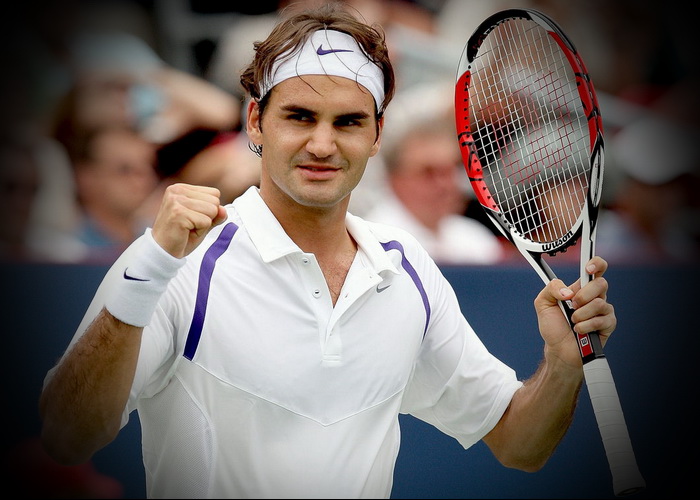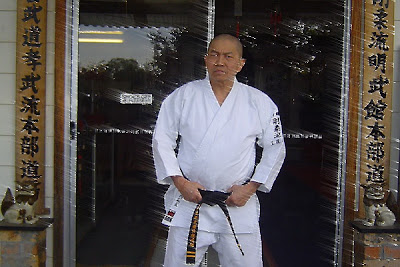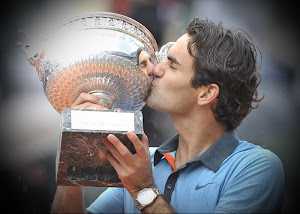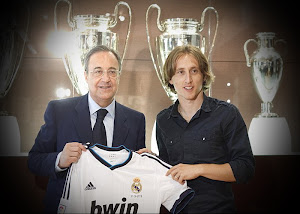Karatedo Sitoryu was faunded by Kenva Mabuni.He was born 14th of November 1889 on Syuri Okinava.He was the represodent of the most famous family of the 17th generation.The family was founded by Kenyo Osiro,who was the great soldier of Ryuykoo Kingdoom.In his childhoodhe had very good health but he had been heard bouth hissoldier by his relatives told stories,and began to dream of being strong and worth his family.Than he listend to their advise and entered karate school at the age of 13.
Mabunis first and stubburn teacher was the great master Anko Itossoo,who taugh Kenva 23 Kata,with its secrets.Mabuni trained very hard and never missed any training wen during taiphun.So,during seven years he studied Syuri Karate or Syurite craft.When Kenva was 20 years old,he took his friends,Todcyun Miagi,advice and studied at great master of Nahate,Higaona Kanro and began study Naha karate.At master Aragaki,hi things was the main creation of Sitoryu karate style.After he left the secondery school and served the army.Kenva Mabuni worked at police almost during these years he actively occupied Judo and Kendo,as these things were involved in police training.Being master of karatedo,he wanted to gether all the things and karate technics of many styles.
Working at police abd being in bussiness trip in different contries,he hed chance to study other technical styles to know other masters techics.He paid a great attention to the ancient vart of Ryokan Budo.
The begining of the 20th cenfury become the widespread time of karate.Becose of the official recognition the karate as on individual subject was indevided in the educationial programm of the secondary schools.The difficulties of that period were lying in the fact,that the united methods of the teaching were missing at the vast of the treniers,the pupillary and skilful degrees of the methods for classification werent stated.Just in this period for many masterss the main inportance of learnig was the phyisical training and the amplification of the sports of the shock,in work with makivara and doing other exercises.
During that years Kenva Mabuni started the activity of lecturing.He buil the departament of karate with his teacher deeply to learn about that art.On the 13-th of februry in 1918,was born his elder son Keney.At the same year Kenva Mabuni activated the function of making popular karate,and he was supported by many famous masters.At the meeting at Mabunis house,which was dewoted to the progress art and unification of the fighting art,many times were attended Gitin Funacosi,Tyodzu Osirou,Tyosin Tibana,Anboun Tokuda,Simpa Sirowa,Seyoto Sokumura,Hoko Isikavan.During one of the krate art public shows in 1918 when was organized by K.Mabuni,the princes Kuni and Kaho were present.
In 1924 Kenva Mabuni become the coach of the two karatedo establishments and was deserved of the honor to show his art beforeprnice Titibu.
In 1920 Mbuni with other famous masters organized the club of Okinawa karate,wich permitted to commit his immemorial dream to create stationary dodzyo for training.Mabuni was one of the active members of the association of the study of on Okinawa art.At works of association there were olso participated many qualificated masters of Okinawa.Such as Tyoyu Motobu,Miyagi Todzyun,Hanasiro Tyomon,Kiyoda Dzyuhangu and many others.
They were discussing different observances of tricks and application features,they were training together and wen exploringthe history of karate together.The most important things during the trining were the phisical training and the practising of kumite.The students werent exploring the technical elements,and the tricks were shown directly during the fightings.The education training was performed by the numerous replating of the practic tricks.The technic of each master had its own personal feature.The 1927 become faithful for Kenva Mabuni life.That year he met Dzigaro Kanoy the founder of modern karate,who came to Okinava for the judo training,to open dodzyo Todzyu Miyagi and Kenva Mabuni had an opportunity to show and explain to Dzigaro Kanoyi the tricks of karatedo.Dzigaro was fond of karate as a kind of fighting art,wich conected the opportunities of pratection and attack,and marhed theimportance of its in national scale.Receiving Dz. Kanoweys argument Kenva Mabuni with ones of his student Konisi Yasuhiro travele to Japan swered times.In 1929 he settled in Japanese town Osaka,where training in different stadions at the some time he devoted to the separation and dewelopmendof Sitoryu Karatedo.Karate being Okinava fighting art,come mony difficulties for Kenva Mabuni at the begining part of remove info Osaka which were the reason of false and reproducing of karatedo.K.Mabuni tooks exhibited performances at the police stating universities,and when at the temples of Budha.For a mass it was were difficult to understand the Katta,as it was called Boxing dances.Mabuni had to show tamesivara wich was the breaking of lreck and board.
Wich showed the whole power of the new fighting art.Though the all difficulties Kenva Mabuni stayed faithful his true to the chosen way His titan forces had a success and as aresult orgnization was created in 1931,wich was recallded Nihon Karatedo further,wich become modern Sitokas predecessor.Many of the founders of <<Day Kihon Karatedo Kayi>> were Kenva Mabuni students.Dhey still form the Japanes Karatedo federations newcleus nowadays and continue to passthe Kenva Mabunis fighting art to their students.In 1934 the master succeeded openhis own dodzyon Yosyukan in Osaka.
Kenva Mabuni was the first amongthe Okinavian masters who inforduced central Japan to karate fighting art.After the World war 2 next to the colleges and universites karatedo clubs were rebuilt.University teams games started to take part and after the Japanes national championship took part.Though the hard state of the economy in which was the Japany,after losing the World War 2 ,Kenva Mbuni put a big effort in recovery of the country with the help of spreading karatedo,devoted him to the development of Sitoryu Karatedo.On the 23rd of many in 1952 he left this life and he couldnt manage to breathe life info his all plans.














